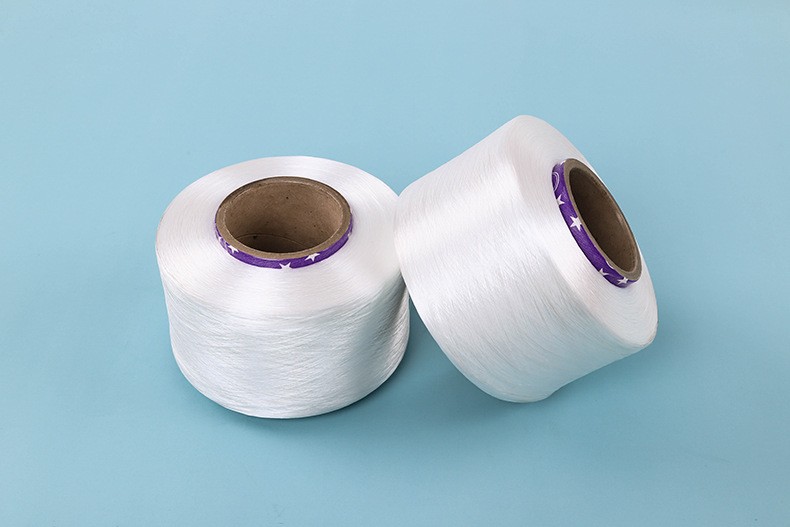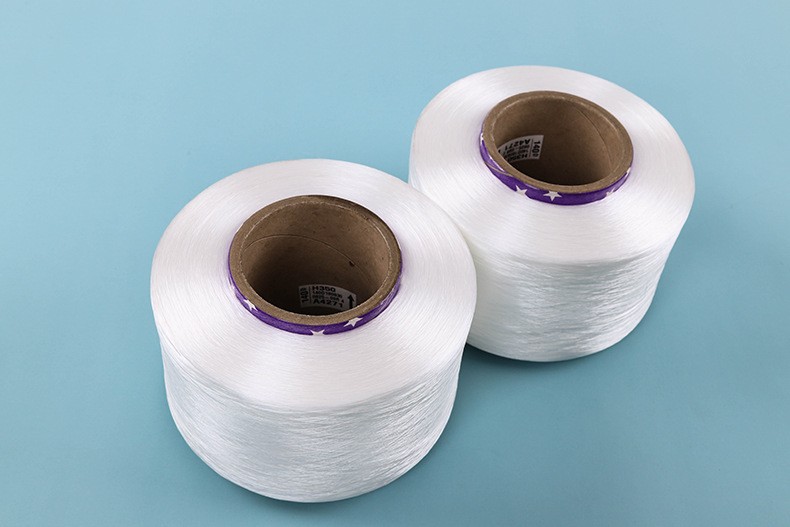In order to expand the application field of spandex, better meet the consumption level of daily necessities, and solve the problem that conventional spandex products cannot meet the application requirements, it is necessary to develop more functional spandex fibers with excellent performance according to the application requirements. This paper introduces the research and development necessity and preparation method of heat resistant spandex.
The rigid segment of spandex degraded at high temperature, and the crosslinking structure was destroyed. When blended with polyester, it usually needs to be dyed many times at a temperature of about 140 ℃, which leads to the decrease of elasticity of Spandex Products, yarn breakage, and the impact of product performance. Heat resistant spandex has been dyed for many times at high temperature (more than 140 ℃), but its elasticity and strength still have no obvious downward trend. Therefore, the development of high temperature resistant spandex is an important direction of Spandex Products.

(1) Increase hard segment proportion method
The heat resistance of spandex can be improved in the manufacture of spinning stock solution and spinning process. In the manufacturing process of spinning stock solution, increase the molecular weight and hard segment ratio of the polymer, so that the polymer can maintain a long chain segment even if it is degraded. In the spinning process, the technological process can be improved by changing the air volume of the tunnel and the winding method. When Lu Huaqin and others made the stock solution, they increased the proportion of aromatic rings, increased the stiffness, and added the anti yellowing agent UDT. The anti yellowing agent preferentially degraded at high temperature, which played a protective role on the urea group on the polyurethane chain. In the process of dry spinning, reduce the tunnel temperature and the winding draft ratio to prevent excessive tension from leading to yarn breakage. Mehdipour et al. Synthesized a new chain extender of diol based on imide, and reacted with the prepolymer terminated by isooxate. The presence of imide units in the polymer main chain increased the proportion of aromatic rings, and the rigidity was improved. No obvious weight loss was found at 230 ℃.
(2) Additive modification method
The use of additives can also improve heat resistance, such as the use of antioxidants to improve the end group, reduce the degradation rate, or directly add high-temperature groups such as silicone. Ln et al. Used diphenylsilane diol (dsid) as an additive to produce a series of polyurethane containing silicon. Adding dsid to the polymer main chain improved the thermal stability of polyurethane. Compared with that before modification, the elastic recovery rate increased by 20%~30%, and increased with the increase of dsid content. Chen long and others made the first prepolymer and the second prepolymer with hydroxyl terminated and amino terminated respectively. After dissolution, chain extender and terminator were added to prepare polyurethane solution and spinning, and heat resistant spandex with elongation at break of 480%~540% was obtained.

With the gradual expansion of the application range of Spandex Products, conventional spandex fiber products can no longer meet the growing needs of consumers. It is urgent to prepare heat resistant spandex and improve its performance.
Comment(0)
You can comment after
SIGN IN